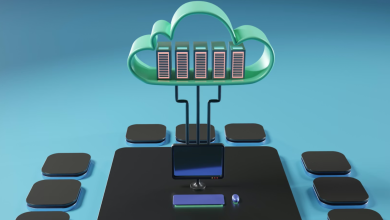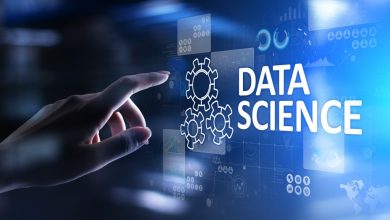
The conversation around AI in education has been dominated by one theme: personalisation. While valuable, this narrow focus on student-facing apps overlooks the most profound opportunity for institutional leaders. The true potential of AI is not just to refine the student experience, but to fundamentally re-architect educational strategy for resilience, relevance, and growth.
For C-suite executives, the imperative is to look beyond classroom tools and see AI as a core driver of institutional infrastructure. This is not merely an academic exercise; it’s a strategic necessity. With K-12 teachers reporting the highest burnout rates of any profession in the U.S., according to Gallup, the operational and financial risks of inaction are immense. Addressing this requires a shift from tactical adoption to a strategic integration that impacts everything from academic quality to operational efficiency.
By embedding AI into the institutional core, leaders can build a future-proof organisation that is both academically excellent and economically robust. This article presents a strategic blueprint for this integration. It moves past the surface-level discussion to offer three actionable frameworks for C-suite leaders. These frameworks, The “How,” The “What,” and The “Why”, provide a clear roadmap for leveraging AI to build a competitive and sustainable educational institution.
AI-Powered Pedagogical Pathways (The “How”)
The first framework addresses how students learn, using AI to ensure genuine subject mastery. This goes beyond basic adaptive learning to engineer truly dynamic pedagogical pathways. These systems adapt in real-time to each student’s unique comprehension level and learning patterns.
Imagine a student struggling with a specific calculus concept. A traditional learning platform might simply offer the same explanation again. An AI-driven system, however, analyses granular interaction data such as time spent on a problem, common errors, and revisited concepts, to identify the precise point of misunderstanding.
It then generates alternative instructional modules, targeted practice problems, or interactive visual aids to bridge that specific knowledge gap. This creates what educators call a “knowledge graph,” a dynamic map of a student’s knowledge that guides them to true understanding. Research from institutions like Carnegie Mellon University Human-Computer Interaction Institute (HCII) has been foundational in developing the intelligent tutoring systems that use this approach. This technology is not limited to STEM; in a humanities course, it could analyse an essay’s structure to guide a student on developing a stronger thesis statement, a function employed by many AI writing assistants.
The institutional implications of this are significant. By ensuring every student has a viable path to mastery, institutions can directly improve retention and graduation rates. This boosts reputation, attracts higher-calibre applicants, and creates a virtuous cycle of academic excellence and institutional prestige.
Dynamic Curriculum Development (The “What”)
The second framework shifts focus to what an institution teaches, ensuring its curriculum remains deeply relevant to the external market. AI provides the tools to transform curriculum design from a static, multi-year process into a responsive, agile system. This is critical for aligning educational outcomes with real-world workforce needs.
By continuously analysing vast datasets, from job postings on LinkedIn and labour statistics to patent filings and industry reports, AI can identify emerging skill gaps long before they become common knowledge. A recent report from McKinsey highlights the accelerating pace of workforce disruption, making this capability more vital than ever. This data-driven approach replaces guesswork with strategic foresight.
This allows an institution to act proactively, not reactively. It can rapidly develop and deploy valuable micro-credentials in high-demand areas, such as ‘generative AI oversight,’ ‘quantum computing literacy,’ or ‘sustainable supply chain management‘. This ensures graduates are not just qualified, but immediately employable, making the institution an essential talent pipeline for the industries of the future.
Furthermore, this agility enables a strategic pivot from a “degree-for-life” model to becoming a “lifelong learning partner.” By offering continuously updated, relevant micro-credentials, institutions can re-engage alumni and corporate partners for upskilling. This creates new, sustainable revenue streams and solidifies the institution’s role as a central pillar in the modern knowledge economy.
Generative AI for Scaling Teacher Efficacy (The “Why”)
The final framework provides the business case, focusing on why this investment delivers a powerful operational ROI. This isn’t about replacing educators but augmenting them, scaling instructional quality without a linear increase in costs. This is the key to creating a more efficient and sustainable educational model.
Educators are frequently burdened with administrative tasks that consume valuable time. Studies, such as the OECD’s Teaching and Learning International Survey (TALIS), show that administrative work is a major contributor to teacher workload and burnout. Generative AI assistants can absorb these loads, handling tasks like grading initial drafts, generating personalised practice problems, and even drafting routine parent communications.
This can free up educators by as much as 10 hours per week. This reclaimed time represents a significant strategic asset that can be reinvested into high-impact activities AI cannot replicate: one-on-one mentorship, Socratic discussion, and complex, collaborative problem-solving. It directly addresses the high cost of faculty turnover by improving job satisfaction and reducing burnout.
Moreover, AI tools can enhance educator effectiveness through professional development. By analysing anonymised class performance data, an AI system can identify common areas of student struggle. It can then provide the teacher with targeted resources, alternative teaching strategies, and data-backed insights, acting as a personalised instructional coach and elevating teaching quality across the institution.
A New Strategic Core
The decision facing educational leaders is not whether to adopt AI, but how to integrate it strategically. Moving beyond simple personalisation tools is the first step. The real transformation comes from embedding AI into the very infrastructure of the institution, treating it as a core component of strategy, not just an IT project.
By focusing on the “How” of pedagogy, the “What” of curriculum, and the “Why” of operational efficiency, leaders can create a powerful, interconnected system. This approach builds a resilient institution that delivers superior academic outcomes and strong financial performance. Ultimately, it secures a competitive advantage in a rapidly changing world.




